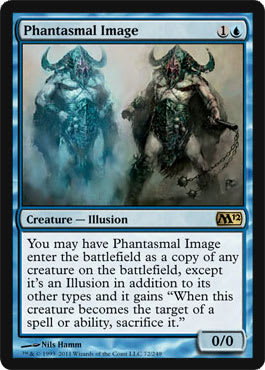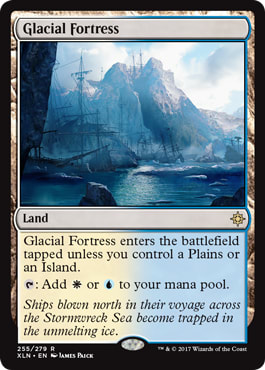Welcome back to our ongoing coverage of the inaugural year of Event Decks. 2011 was a historic year for Preconstructed Magic, as the new Standard-ready product hit the shelves beginning with Mirrodin Besieged, and would endure in one form or another all the way to Battle for Zendikar.
With the release of Magic 2012 (in July of 2011), there were now six Event Decks available. All but one of them had one thing in common, something that would cause some pushback from the player community this time around. To understand why this was, we need to look at the idea of rotation in Standard, which was different from the present day.
Five years ago, you had an annual rotation centered on the large Fall set. As the new block entered Standard legality, one whole block would be departing. Event Decks were positioned to be an entry-level product for Standard gameplay, particularly at the lowest level of organized play, Friday Night Magic. Nobody had any illusions that they’d be taking down the Pro Tour for $24.95 MSRP, but for that you could still (in theory) hope to be somewhat competitive.
As we saw last week, one of the ways that Wizards looked to offer players some muscle in the deck was to include powerful cards that had already been available for awhile. Putting new-set chase cards would be tantamount to cannibalism of booster sales, but by reaching back for still-legal powerhouses with a rapidly-approaching expiration date, they could happily split the difference. Case in point was the Stoneforge Mystics in New Phyrexia’s War of Attrition, which had been released in Worldwake in February of 2010.
With Zendikar block set to rotate out of Standard in September of 2011, Mirrodin Besieged’s Event Decks were playable for around seven months, before they’d have to be reworked to conform to the new Standard environment, or played in a different format. New Phyrexia’s decks would rotate out at the same time, and for the most part the community didn’t seem to care much that they’d only be viable for a little less than four months.
But when the Event Decks for Magic 2012 were released, this calculation tipped away from Wizards. One of the decks, Illusionary Might, was comprised of cards from Scars of Mirrodin on, meaning that the deck would have an effective life of over a year. But the other one, Vampire Onslaught, well that was a problem.
Year: 2011
Set: Magic 2012
Deck: Vampire Onslaught
Rares: Blade of the Bloodchief (x2), Bloodghast (x2), Kalastria Highborn, Mimic Vat, Verdant Catacombs
Vampire Onslaught ? Magic 2012 Event Deck | Wizards of the Coast
- Creatures (29)
- 1 Kalastria Highborn
- 1 Vampire Hexmage
- 2 Bloodghast
- 2 Vampire Nighthawk
- 3 Vampire Outcasts
- 4 Bloodthrone Vampire
- 4 Gatekeeper of Malakir
- 4 Pawn of Ulamog
- 4 Vampire Lacerator
- 4 Viscera Seer
- Instants (4)
- 4 Dismember
- Artifacts (3)
- 1 Mimic Vat
- 2 Blade of the Bloodchief
- Lands (24)
- 23 Swamp
- 1 Verdant Catacombs
- Sideboard (15)
- 4 Distress
- 2 Go for the Throat
- 4 Skinrender
- 3 Vampire Hexmage
- 2 Vampire Nighthawk
In one sense, this deck hit just the right notes for Wizards of the Coast. You had a deck built around a popular tribe that had just seen a renaissance as one of Black’s iconic races, the Vampire. Not only that, but you had some very strong chase cards in Bloodghast and Verdant Catacombs that lent the deck some real strength, but had been in circulation long enough that an additional printing wasn’t going to do much to the marketplace.
But there was a line of viability, and Wizards had just crossed it. For all its solidity and exciting card selection, Vampire Onslaught had a shelf life of a little over two months, and was decried by some as a thinly-veiled cash grab at worst, and a poor execution of concept at best. It was a pointed lesson as to how much utility Magic players expected for their dollar.
As a deck, though, it’s a nicely-constructed one. Heavily aggro-rush, the deck packed in twenty-nine creatures, with twenty-six of those costing 3 mana or less. A playset of Vampire Lacerator — effectively a retooling of the classic Carnophage — got things off on the right foot, while a set of Viscera Seers ensured that no Vampire would fall to removal without providing some last bit of value.
Moving through the rest of the deck, the synergies become apparent. Bloodghasts and Lacerators both reward a swift takedown of the opponent, optimizing when you’ve got the job halfway done. Bloodthrone Vampires are another sacrifice outlet, with plenty of rewards for your Vampires shuffling off to the afterlife in the form of Kalastria Highborn, Pawn of Ulamog, Mimic Vat, or Blade of the Bloodchief.
The highly efficient Vampire Nighthawks and Vampire Outcasts round out the aggressive deck, and a playset of Dismembers (highly played at the time) comprise the removal suite.
As for a sideboard, you had some additional removal in Go for the Throat (another card getting play in its day), as well as four Skinrenders — the deck’s only non-Vampire options. Distress was there for hand disruption against slower decks, while Vampire Hexmages were effective counters to Planeswalkers.
All in all, it was a very solid and playable deck, even if — like all Event Decks — mileage varied depending upon the meta at your Friendly Local Gaming Store. And if you were a fan of Tribal decks, Magic 2012 was a gift.
Year: 2011
Set: Magic 2012
Deck: Illusionary Might
Rares: Glacial Fortress, Grand Architect (x2), Lord of the Unreal, Phantasmal Image, Precursor Golem, Steel Hellkite
Illusionary Might ? Magic 2012 Event Deck | Wizards of the Coast
- Creatures (25)
- 1 Lord of the Unreal
- 1 Phantasmal Image
- 1 Precursor Golem
- 1 Steel Hellkite
- 2 Grand Architect
- 3 Phantasmal Dragon
- 4 Aether Adept
- 4 Phantasmal Bear
- 4 Porcelain Legionnaire
- 4 Spined Thopter
- Instants (4)
- 4 Mana Leak
- Sorceries (4)
- 4 Preordain
- Enchantments (3)
- 3 Mind Control
- Lands (24)
- 19 Island
- 1 Glacial Fortress
- 4 Glimmerpost
- Sideboard (15)
- 2 Flashfreeze
- 2 Frost Breath
- 3 Master Thief
- 1 Mind Control
- 2 Negate
- 4 Neurok Commando
- 1 Stoic Rebuttal
In a way, the two Event Decks for Magic 2012 were a study in contrasts. Despite both effectively being tribal decks, you had one deck that was very strong, but had an abbreviated shelf life. The other deck wasn’t as tightly constructed, but Illusionary Might would be fresh for another year and then some.
Illusionary Might was a deck built around the power of Illusions. Magic 2012 dedicated some design space to making Illusions a tribe in Blue, as creatures that were overpowered for their cost, but which carried with them a fatal flaw. If your opponent simply targets them, they disappear like a puff of ephemeral smoke. Toward that end, the deck provided a full playset of Phantasmal Bears, and a trio of the Phantasmal Dragons. It also included a miser’s copy of the Lord of the Unreal, the tribal “lord” that not only pumps up your Illusions, but protects them from being targeted by your opponent through hexproof.
In addition to the Illusions theme, there was also a second vein of form in the deck centered around artifact creatures and the Grand Architect. With cards like the Steel Hellkite, Precursor Golem, and Spined Thopter, there were plenty of artifact creatures on offer. The deck also had a playset of the very solid Porcelain Legionnaire, a White card from New Phyrexia. Although the deck only had one source of White mana (a Glacial Fortress), the Phyrexian mana on the Legionnaire meant that you could just as easily play it of you were willing to part with 2 life.
Not only that, but the Grand Architect had the ability to turn artifact creatures Blue, in order to let them benefit from the +1/+1 it grants all Blue creatures. Like the Vampires deck, most of the work here is done by creatures rather than spells. The only spell-based removal is a trio of Mind Controls, with some card draw (Preordain) and countermagic (Mana Leak). That’s it. If you’re going to be dictating the pace of play, you’ll be doing it in the red zone.
The deck’s sideboard was a bit of a hodgepodge. You had a lot more access to countermagic, with Flashfreeze, Negate, and a single Stoic Rebuttal. You could tailor your creature suite with a set of Neurok Commandos (for card advantage) or three copies of Master Thief (for cards like Wurmcoil Engine and the Swords that were dominant in the meta of the day). Finally, you had one more Mind Control, and some tempo cards in Frost Breath. Ultimately, it was a lot of fun to play, even if it wasn’t the strongest such deck Wizards had released.
Next week, we’ll look at the arrival of Innistrad, and what it held for the Event Decks as we conclude our feature on the inaugural year of the product line. And if you had any experiences — good or bad — with either of the decks featured today, we’d love to hear about it in the comments below!






























